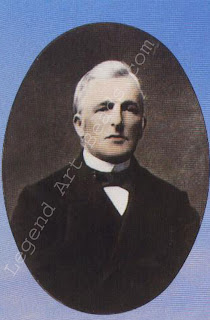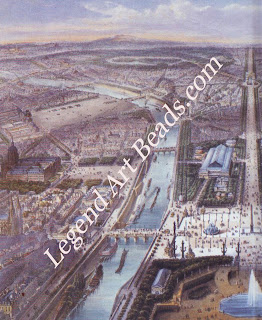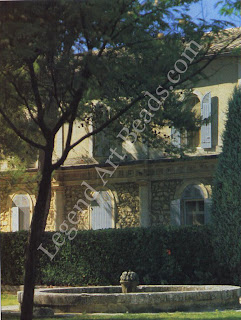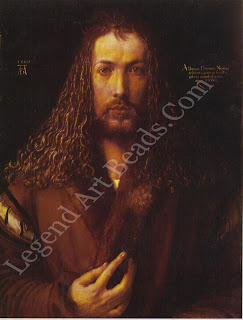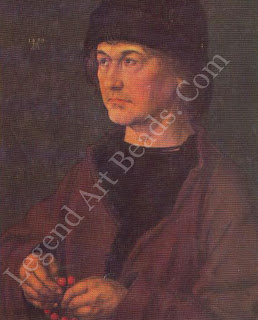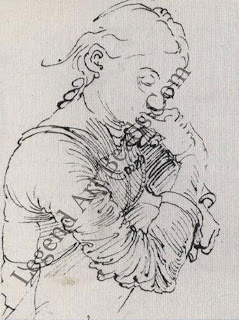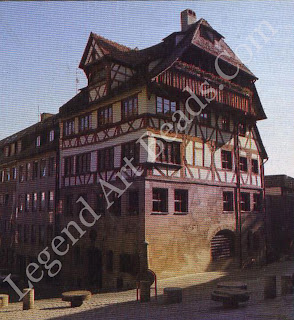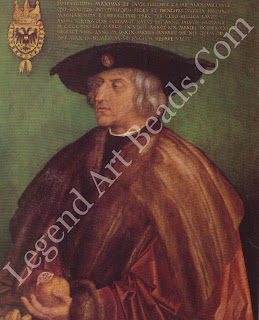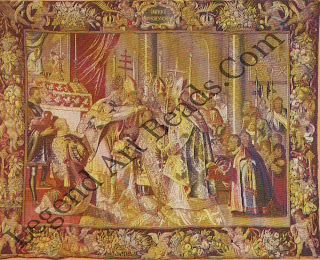John
Constable, perhaps the greatest and most original of all British landscape
artists, is renowned especially for his views of the Stour Valley in Suffolk,
Salisbury Cathedral and Hampstead Heath. He was brought up in the country, and
out of his deep love for the English landscape grew a determination to record
its beauty: to capture its moistness, light and atmosphere, as well as its
shapes and colours.
Today,
Constable's genius is acknowledged throughout the world, but during his own
lifetime, landscape painting was unfashionable, and the artist was forced to
struggle for recognition. He was 39 before he sold his fast landscape. And
although his magnificent paintings were acclaimed in France, the Royal Academy
in London refused him full membership until 1829 just eight years before his
death.
A Countryman in London
When he chose art as a profession,
Constable left his Suffolk home to live permanently in London. But his bonds
with East Anglia remained strong, and he returned each summer to sketch and
paint.
 John
Constable was born in East Bergh°lt in Suffolk on 11 June 1776, the fourth of
his parents' six children. His father Golding was a prosperous corn merchant
who owned wind- and water-mills in East Bergholt and nearby Dedham, together
with land in the village and his own small ship, The Telegraph, which he moored
at Mistley on the Stour estuary and used to transport corn to London. Constable
was brought up with all the advantages of a wealthy, happy home.
John
Constable was born in East Bergh°lt in Suffolk on 11 June 1776, the fourth of
his parents' six children. His father Golding was a prosperous corn merchant
who owned wind- and water-mills in East Bergholt and nearby Dedham, together
with land in the village and his own small ship, The Telegraph, which he moored
at Mistley on the Stour estuary and used to transport corn to London. Constable
was brought up with all the advantages of a wealthy, happy home.
Most of his
'careless boyhood', as he called it, was spent in and around the Stour valley.
After a brief period at boarding school in Lavenham, where the boys received
more beatings than les-sons, he was moved to a day school in Dedham. There the
schoolmaster indulged Constable's interest in drawing, which was encouraged in
a more practical way by the local plumber and glazier, John Dunthorne, who took
him on sketching expeditions.
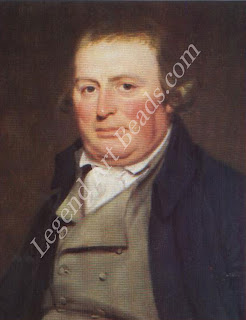 Golding
Constable was not enthusiastic about his son's hobby, but gave up the idea of
educating him for the church and decided instead to train him as a miller. John
spent a year at this work and, though he never took to the family business, he
did acquire a thorough knowledge of its technicalities. When his younger
brother Abram eventually came to run the business, he often consulted John
about repairs to the mill machinery.
Golding
Constable was not enthusiastic about his son's hobby, but gave up the idea of
educating him for the church and decided instead to train him as a miller. John
spent a year at this work and, though he never took to the family business, he
did acquire a thorough knowledge of its technicalities. When his younger
brother Abram eventually came to run the business, he often consulted John
about repairs to the mill machinery.
FIRST SIGHT OF A MASTERPIECE
Constable's
passion for art was decisively stimulated by Sir George Beaumont, an amateur
painter and art fanatic, whom he met in 1795. Beaumont
 owned a
French masterpiece, Hagar and the Angel, by Claude Lorrain, which he took with
him wher-ever he went, packed in a specially-made travel-ling box. The sight of
this picture convinced Const-able of his vocation as an artist. Soon
afterwards, on a trip to London, he began to take lessons from the painter
'Antiquity Smith', an eccentric charac-ter who gave him sound advice and
introduced him to the world of professional painting.
owned a
French masterpiece, Hagar and the Angel, by Claude Lorrain, which he took with
him wher-ever he went, packed in a specially-made travel-ling box. The sight of
this picture convinced Const-able of his vocation as an artist. Soon
afterwards, on a trip to London, he began to take lessons from the painter
'Antiquity Smith', an eccentric charac-ter who gave him sound advice and
introduced him to the world of professional painting.
By 1799
Golding Constable's reluctance to allow his son to pursue his unprofitable and
scarcely re-spectable career was tempered by the fact that a younger brother,
Abram, was showing promise as a miller and businessman. So Constable was
admitted to the Royal Academy Schools and his departure was blessed by his
father with a small allowance.
In London
Constable was a hardworking and committed student, who spent his evenings reading
and making drawings, but he was homesick for his friends and family in Suffolk,
and also for its countryside. For a while he shared rooms with another student,
Ramsay Reinagle, who painted his portrait (title page), but Constable became
disgusted with his sly copying of Old Masters and his doubtful dealings in the
art market. His morale. was not improved by the discovery that landscape and
landscape painters were held in very low esteem by the Academy, which only
respected history and portrait painting.
Letters and
baskets of food transported by the family ship kept him in constant contact
with East Bergholt, and he spent many of his summer holidays there, using a
cottage near his parents' house as a studio. He also did some travelling around
England. In 1801 he toured the Peak District in Derbyshire and two years later
made a short sea voyage from London to Deal in Kent aboard an East Indian man.
A LONG, FRUSTRATING COURTSHIP
During the
next seven years the unhappy couple were often parted and sometimes forbidden
even to write, but throughout their long, frustrating courtship they remained
loyal to each other. Con-stable, who felt badly isolated in London, was sustained
by his family, all of whom wished to see him married to Maria, and by the Rev
John Fisher, a nephew of the Bishop of Salisbury, one of his earliest patrons.
Without a strong vein of obstinacy in his character, Constable would not have
survived these difficult years, though they also sharpened his ten-dency to
suffer from depression and moodiness. He gained a reputation for being hostile,
arrogant and sarcastic in his professional dealings, which did not help to sell
his pictures. On the other hand,
John
ConstableeRevd FisheriFitzwilliam Museum with his family and close friends, he
was unfailingly generous and affectionate. In fact, his make-up was in many
ways contradictory. He was, for example, a die-hard reactionary in his
politics, viewing the prospect of Reform with alarm, but in his art he was
distinctly radical.

While
courting Maria, he fell into a regular pattern of work. He would spend the late
autumn, winter and early spring in London, working up his sketches from nature
and preparing his paintings for the Royal Academy exhibition, which opened each
May. Then he would go down to East Bergholt for the summer and early autumn,
escaping the city with relief. In 1815 Mrs. Constable died, which was a great
blow to him. Not long after, Maria's mother died too. These sad events seem to
have strengthened the couple's resolve and by the February of 1816 they had
made up their minds to marry in defiance of all opposition. Then in May,
Constable's father died, sitting peacefully in his chair.
A Lifelong Romance
Constable's
love for Maria Bicknell (right) was a guiding passion in his life. He had known
her since childhood, and the sketch below is thought to be a portrait of Maria
as a young girl. When they fell in love in 1809, Constable's income was meager,
and Maria's family opposed their engagement. The lovers were forced to wait
seven years until he could afford to support them both. And while the marriage
was happy, it was doomed to be short. At the age of 40, Maria died of TB,
leaving a heartbroken husband to bring up their seven young children.
His will,
Abram was to take over the firm and pay John his share of some E200 a year.
Added to his allowance and his earnings from painting, this made marriage
possible at last.
Constable
wrote to Dr Rhudde, seeking his con-sent for the final time. He did not reply,
but confined himself to a frosty bow from his coach, which was reinforced by a
huge grin of congratulation on the face of his coachman above. At the last moment,
Constable astounded Maria by trying to delay the wedding, while he worked on a
painting, but on 2 October they were married in St Martin-in-the-Fields by his
friend Fisher, now an archdeacon. None of the Bicknell family attended.
They enjoyed
a long and happy honeymoon, returning to London in December. By the spring of
the next year Maria was pregnant, having already suffered a miscarriage and
Constable arranged for them to move into larger lodgings. He chose a house in
Keppel Street in Bloomsbury, which appealed to him because it overlooked fields
and ponds. There was even a pig farm near the British Museum to remind them of
Suffolk. In these rustic surroundings their first son was born in 1817.
Marriage and
fatherhood seemed to release in Constable new powers of creativity, and he was
soon at work on his 'six-footers', the large scenes of the River Stour, which
were to become his best-loved masterpieces. The family now enjoyed a settled
way of life, dominated each spring by the exhibition of these big canvases,
which slowly added to the growth of his reputation.
SKETCHES FOR THE HAY WAIN
In 1820 he
began his oil sketch of the picture that was to be The Hay Wain the wain itself
gave him much trouble and he finally had to ask Johnny Dunthorne, the son of
his old friend, to supply him with an accurate drawing. He finished
III the
rxhthhon fiercely to have their pictures hung in prominent positions Constable
chose the large format of his 'six-foot-', canvases to make paintings stand out
aid catch the eye of purchasers.
it in the
April of the following year soon after his second son was born. It has become
his most famous picture, though it made little impact in Eng-land at the time
of its original exhibition, and was eventually bought by a French dealer.
Maria's health had always been delicate and in 1821 Constable settled his
family into a house in Hampstead where the air was cleaner.
For his own use, he
rented a room and a little shed from the village glazier. Standing some 400
feet above the smoke of London, Hampstead was at that time a farming area, with
sand and gravel workings. Along with the Stour valley and Salisbury, it be-came
one of the few landscapes Constable responded to creatively. In 1824 the king
of France awarded him, in his absence, a gold medal for The Hay Wain. And for
the first time his six-footer of the season, The Lock, was bought for the
asking price while on exhibition at the Royal Academy.
MARIA'S TRAGIC ILLNESS
Tragically,
just as it looked as if he might be achieving professional independence, the
first signs of his wife's fatal illness, pulmonary tuberculosis, showed
themselves. To restore her health, he sent her and their young children, now
four in number, to Brighton for the summer. Constable joined them for a few
weeks and painted a number of marine scenes. The next two years saw the birth
of two more children, but no improvement in Maria's health. And the birth, in
January 1828, of her seventh child weakened Maria badly.
 In March her father
died, leaving her £20,000 and putting an end at last to their money worries.
But Maria's coughing worsened, she grew feverish at nights and throughout the
summer she wasted away. Maria died on 23 November and was buried in Hampstead.
Constable told his brother Golding, 'I shall never feel again as I have felt,
the face of the world
In March her father
died, leaving her £20,000 and putting an end at last to their money worries.
But Maria's coughing worsened, she grew feverish at nights and throughout the
summer she wasted away. Maria died on 23 November and was buried in Hampstead.
Constable told his brother Golding, 'I shall never feel again as I have felt,
the face of the world
is totally
changed to me'. The marriage for which he had waited so long had lasted a mere
12 years.
He slowly picked up the threads of his professional life. Ironically,
he was elected a full Academician the next February, though by only one vote.
His great rival Turner brought the news, and stayed talking with him late into
the night. In time, new projects began to interest him, notably the publication
of engravings taken from his paintings and oil sketches.
But the period of his
greatest achievements was over. In 1835 he painted The Valley Farm, another
view of Willie Lott's cottage in Flatford, which appears in the Hay Wain. This
was his last major picture of Suffolk. The buyer wanted to know if it had been
painted for anyone in particular. 'Yes sir', Constable told him. 'It is painted
fore very particular person - the person for whom I have all my life painted.'
He died at night on 31 March 1837 and was buried beside Maria in Hampstead.
Writer-Marshall Cavendish
 John
Constable was born in East Bergh°lt in Suffolk on 11 June 1776, the fourth of
his parents' six children. His father Golding was a prosperous corn merchant
who owned wind- and water-mills in East Bergholt and nearby Dedham, together
with land in the village and his own small ship, The Telegraph, which he moored
at Mistley on the Stour estuary and used to transport corn to London. Constable
was brought up with all the advantages of a wealthy, happy home.
John
Constable was born in East Bergh°lt in Suffolk on 11 June 1776, the fourth of
his parents' six children. His father Golding was a prosperous corn merchant
who owned wind- and water-mills in East Bergholt and nearby Dedham, together
with land in the village and his own small ship, The Telegraph, which he moored
at Mistley on the Stour estuary and used to transport corn to London. Constable
was brought up with all the advantages of a wealthy, happy home. Golding
Constable was not enthusiastic about his son's hobby, but gave up the idea of
educating him for the church and decided instead to train him as a miller. John
spent a year at this work and, though he never took to the family business, he
did acquire a thorough knowledge of its technicalities. When his younger
brother Abram eventually came to run the business, he often consulted John
about repairs to the mill machinery.
Golding
Constable was not enthusiastic about his son's hobby, but gave up the idea of
educating him for the church and decided instead to train him as a miller. John
spent a year at this work and, though he never took to the family business, he
did acquire a thorough knowledge of its technicalities. When his younger
brother Abram eventually came to run the business, he often consulted John
about repairs to the mill machinery.  owned a
French masterpiece, Hagar and the Angel, by Claude Lorrain, which he took with
him wher-ever he went, packed in a specially-made travel-ling box. The sight of
this picture convinced Const-able of his vocation as an artist. Soon
afterwards, on a trip to London, he began to take lessons from the painter
'Antiquity Smith', an eccentric charac-ter who gave him sound advice and
introduced him to the world of professional painting.
owned a
French masterpiece, Hagar and the Angel, by Claude Lorrain, which he took with
him wher-ever he went, packed in a specially-made travel-ling box. The sight of
this picture convinced Const-able of his vocation as an artist. Soon
afterwards, on a trip to London, he began to take lessons from the painter
'Antiquity Smith', an eccentric charac-ter who gave him sound advice and
introduced him to the world of professional painting.  In March her father
died, leaving her £20,000 and putting an end at last to their money worries.
But Maria's coughing worsened, she grew feverish at nights and throughout the
summer she wasted away. Maria died on 23 November and was buried in Hampstead.
Constable told his brother Golding, 'I shall never feel again as I have felt,
the face of the world
In March her father
died, leaving her £20,000 and putting an end at last to their money worries.
But Maria's coughing worsened, she grew feverish at nights and throughout the
summer she wasted away. Maria died on 23 November and was buried in Hampstead.
Constable told his brother Golding, 'I shall never feel again as I have felt,
the face of the world 







